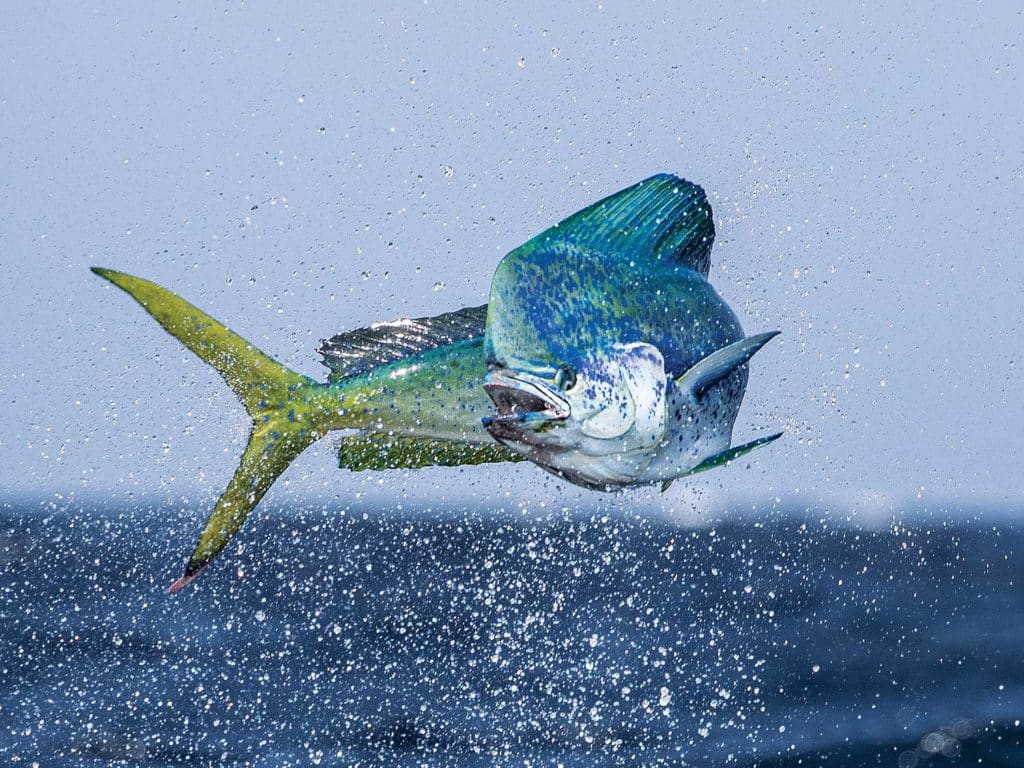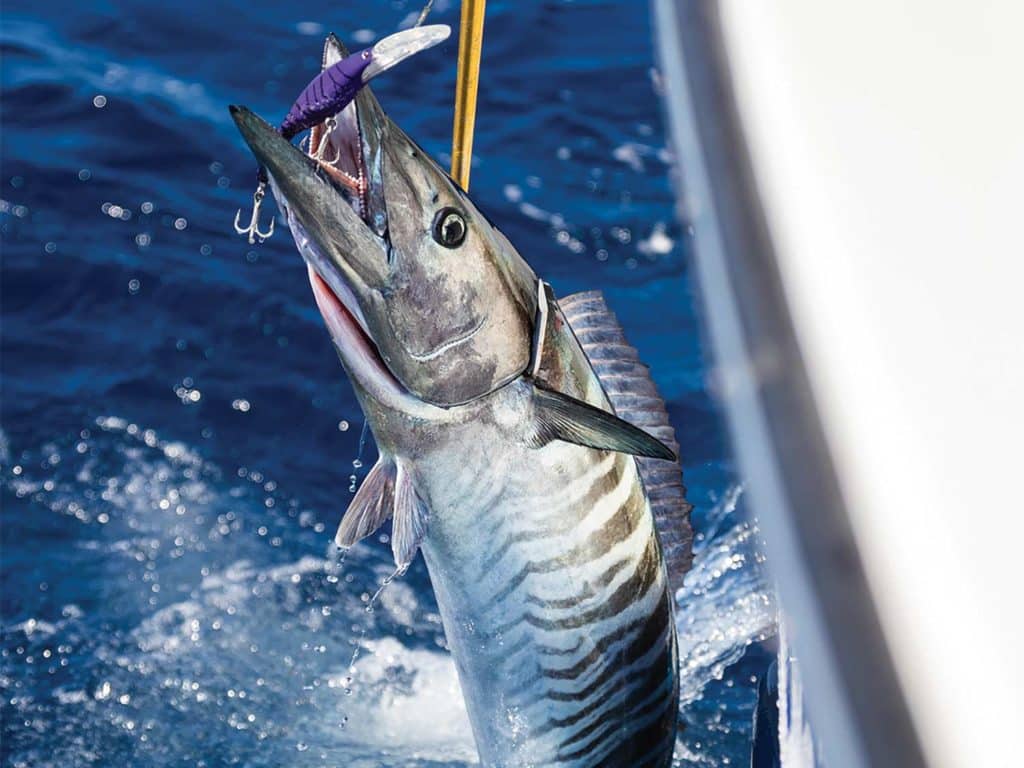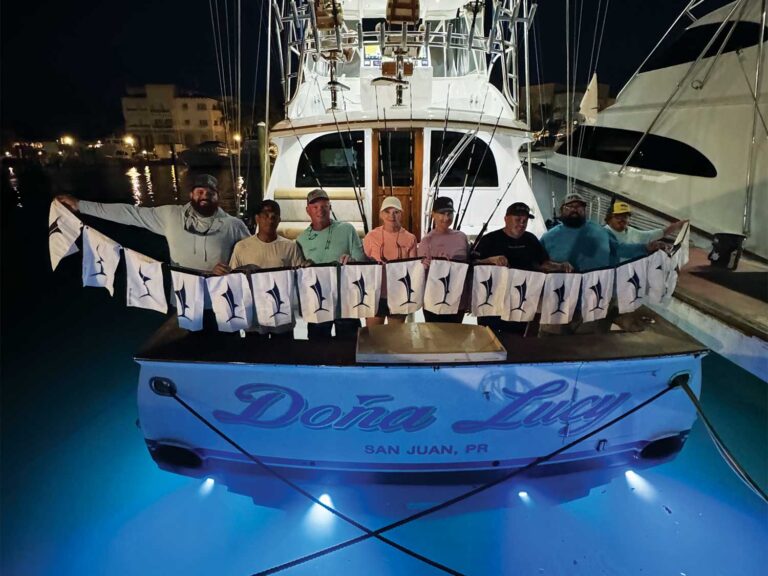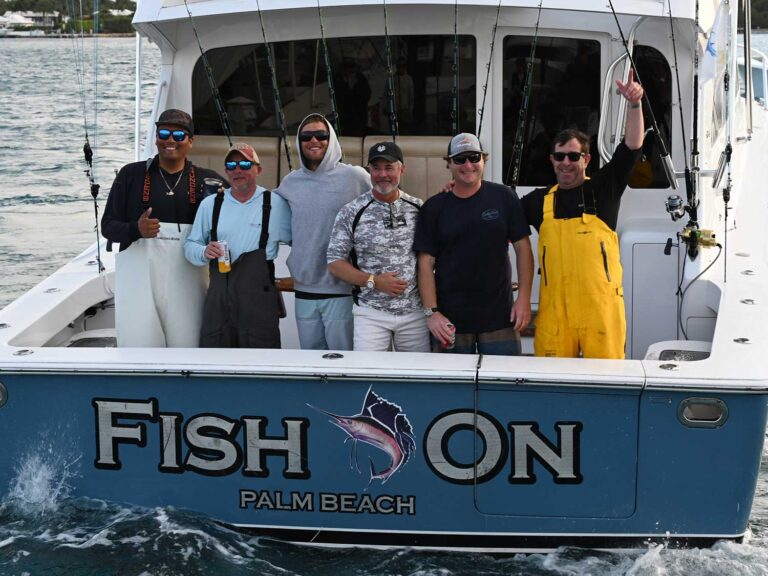
It’s not particularly difficult or original to wax poetic about dolphin. They are notoriously prolific, not only from a biological perspective, but also in art. Painters, photographers, carvers, chefs, and countless other creatives have found inspiration in their spectacular beauty, fight, and taste. No wonder they’re so popular.
Read any story about dolphin, and the writer will immediately paint your imagination in neon green and vibrant blue. Angry, hooked dolphin leaping through the air and thrashing as they bound over cresting waves flashes in the reader’s mind’s eye. Talking about dolphin in such a colorful context is easy. Fishery management information, however, is not quite as appealing to read—or to write. But there is crucially important information to extract from management news, especially as it relates to changing regulations for fishermen.
The Process
The South Atlantic Fishery Management Council—a body of recreational anglers, charter operators, commercial fishermen, state agency and federal representatives, and law enforcement personnel—is responsible for proposing management measures for various species managed in federal waters from the Virginia/North Carolina border to Key West, Florida. The long list of species managed by the council includes a variety of snappers and groupers, king mackerel, Spanish mackerel, spiny lobster, shrimp, dolphin and wahoo. Although the council’s jurisdiction typically applies to the East Coast’s four most southern states, the council’s Dolphin Wahoo Fishery Management Plan covers dolphin and wahoo along the entire Atlantic coast of the United States.
If a management need or issue is identified in a fishery, the council begins developing an amendment to that management plan. Amendments contain actions to address the issue and evaluate environmental, social, and economic effects of proposed changes. Throughout this process, public comment opportunities solicit input and guidance from stakeholders in the region regarding the proposed actions. During quarterly council meetings, that input is discussed, and recommendations from fishermen serving on the council’s species-specific advisory panels are considered to further hone the actions weighed in the amendment. Once the council approves the amendment, it is sent to NOAA’s National Marine Fisheries Service for consideration.
NOAA and the Secretary of Commerce may approve, partially approve or disapprove the actions described in an amendment. Public comment opportunities are available throughout this rule-making process, so fishermen are encouraged to provide input then as well. After an amendment earns formal secretarial approval, the final rule publishes and an effective date is announced. The new regulations proposed in the amendment later become federal law. Although all of this might seem cumbersome, it should serve as useful context when discussing a recent council-approved amendment that is currently under review by NOAA Fisheries.
The Proposal
In June 2021, the council approved Dolphin Wahoo Amendment 10, which proposes numerous management actions for dolphin and wahoo. Development of the amendment began in 2016, and hundreds of public comments were received from anglers, charter operators, commercial fishermen and others. Dolphin and wahoo are incredibly important species, and if you do any bluewater fishing, you recognize their biological, cultural and economic significance. While there is unanimous agreement that these fish are critically important to fisheries in the US, there are varying perspectives on how to address potential issues in the fishery, especially when regional differences emerge.
Those differences were highlighted most notably when discussing an action to reduce the vessel limit for dolphin. Under current regulations, private anglers and charter boats are allowed to keep 10 dolphin per person per day, with a vessel limit of 60 fish. In recent years, fishermen in Florida have called for a decrease in the recreational vessel limit, citing concerns about the status of the dolphin fishery. Charter operators and recreational fishermen from South Florida indicated that they are seeing fewer and smaller fish than ever before and they fear that they are the proverbial coal-mine canary for a decline in the health of the fishery. Meanwhile, charter fishermen in North Carolina have noted that the current vessel limit helps them to sell trips and that a reduction would be harmful to the industry. Some fishermen also indicated that there doesn’t appear to be an issue with the fishery in North Carolina.
Mirroring the public comments from their states, Florida council members urged for a decrease in the vessel limit under Amendment 10, and council members from North Carolina pushed for status quo. Eventually, the council identified a compromise to reduce the vessel limit to 54 fish.

Possible Actions
Some actions in Amendment 10 accommodate revised recreational data and catch-level recommendations such as annual catch limits. Others change accountability measures if an annual catch limit for dolphin or wahoo were to be exceeded. The amendment also proposes actions that would address requests from properly permitted lobster fishermen in New England to allow retention of dolphin when pot gear is on board a vessel, as well as calls to do away with the operator-card requirement in the dolphin/wahoo fishery for charter- and commercial-vessel operators or crew.
During the amendment’s development, the council also considered modifying the bag limit and establishing a vessel limit for wahoo. Initial analyses projected that the wahoo annual catch limit might be met in subsequent years and that the fishery could suffer closures. However, the majority of public comments received from fishermen, primarily submitted by charter operators in North Carolina, opposed reducing the bag limit or the introduction of a vessel limit. Much like in the case of dolphin, the fishermen explained that lowering the limit would be detrimental to the industry, reducing the likelihood that customers would consider booking trips. After reviewing new analyses and considering public comment, the council removed the action altogether.
Read Next: Learn about a tagging project aimed specifically at dolphin.
There are also multiple ways that fishermen can participate in the process. When looking at public comments received on topics related to dolphin and wahoo, it’s not uncommon to see fishing legends and tournament heroes chime in on these issues. Some have also participated on the council’s advisory panels or taken roles as council members. Fisheries management might not be as sexy as a lit-up dolphin, but it matters. Decisions made at the table affect all of us.
If Amendment 10 is approved, it’s likely that new regulations won’t be implemented until mid- to late 2022. Timelines like these are extremely difficult to estimate, so it’s best to keep an ear to the ground so you don’t miss any important regulatory changes.
Anglers can keep up to date by getting news from the council and NOAA NMFS, or by downloading to your mobile device the free Fish Rules app or the Fish Rules Commercial app for information on regulations. To see a full list of actions considered under Dolphin Wahoo Amendment 10, please visit safmc.net.
This article originally appeared in the December 2021 print issue of Marlin.







